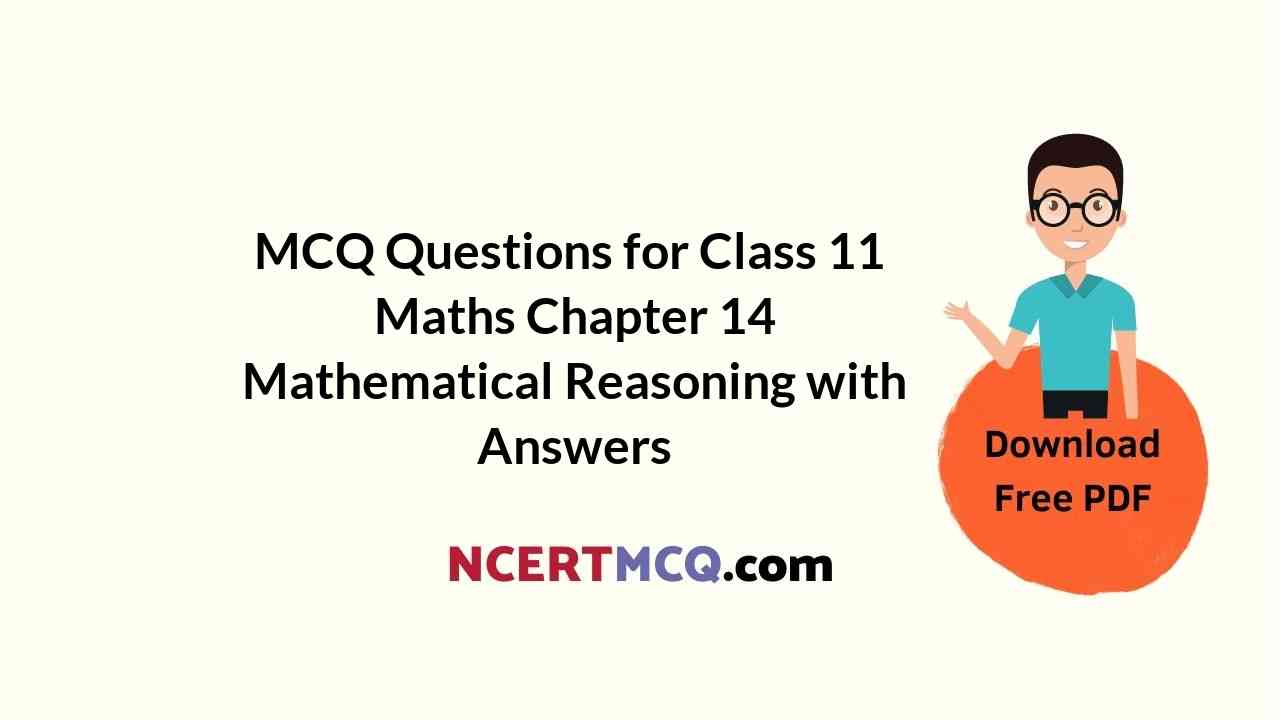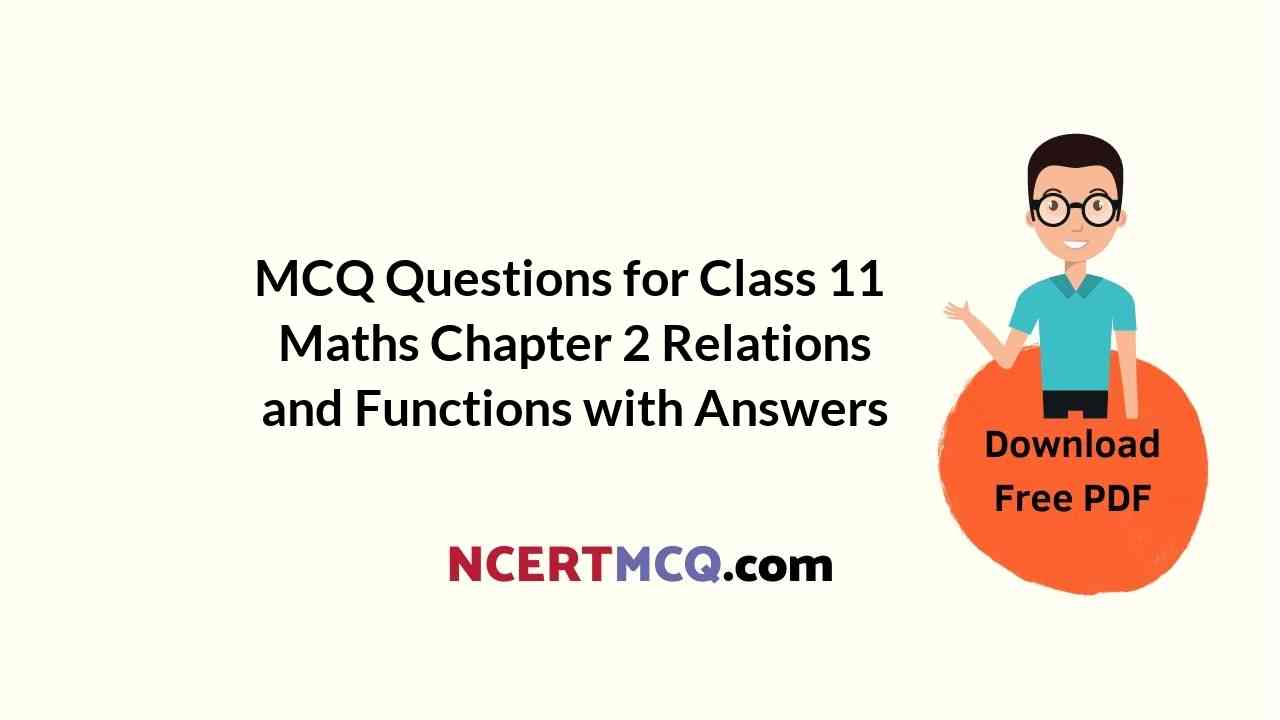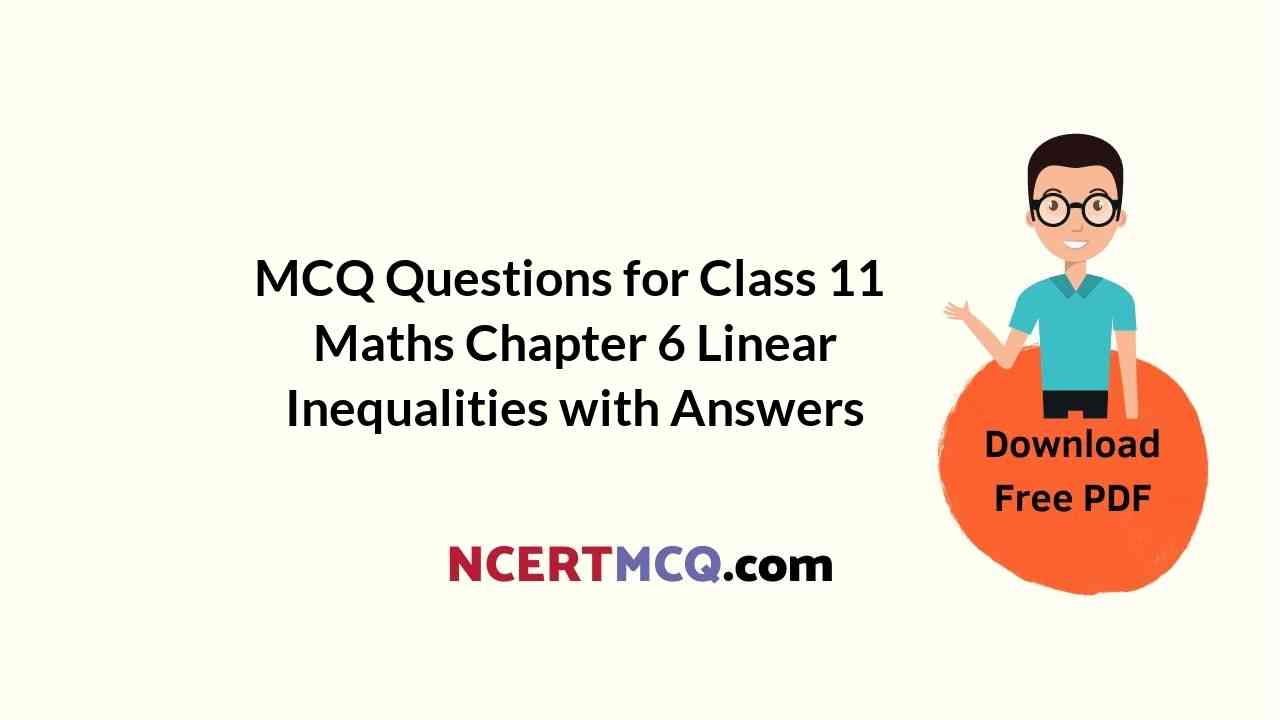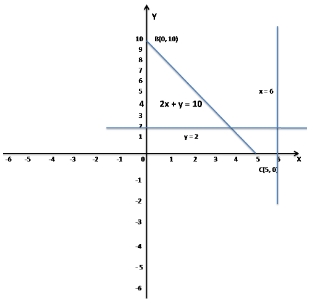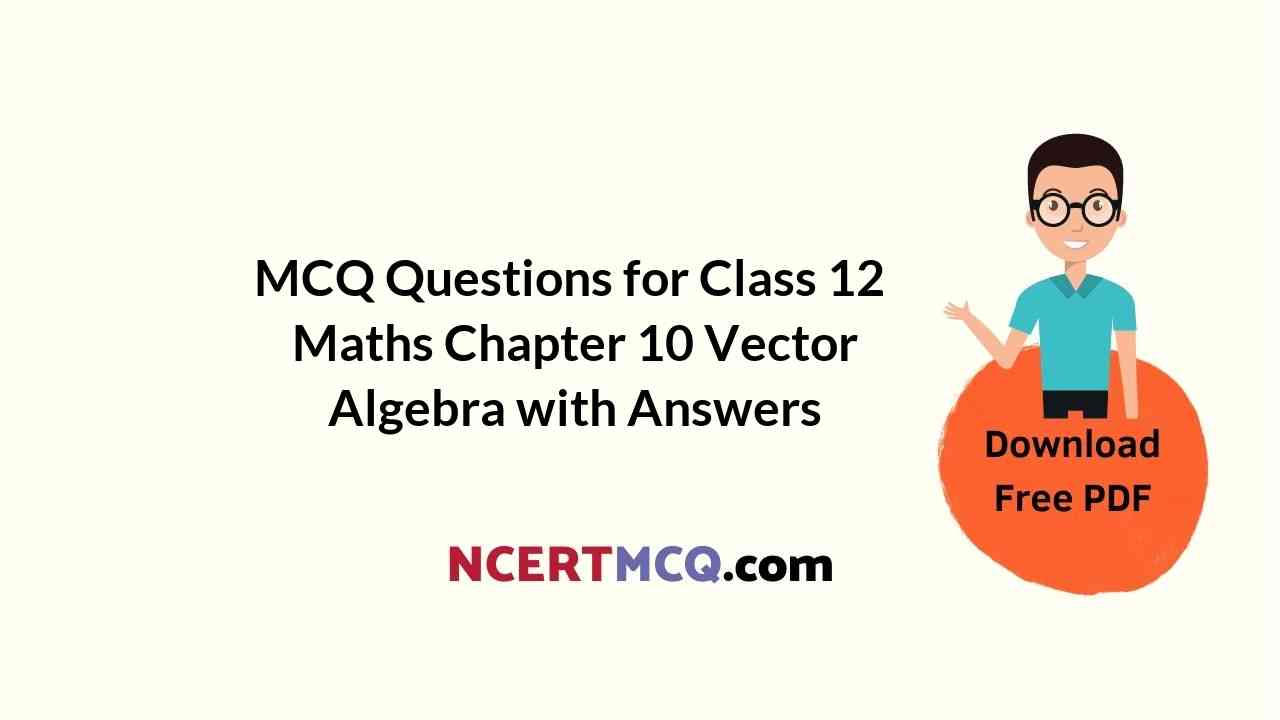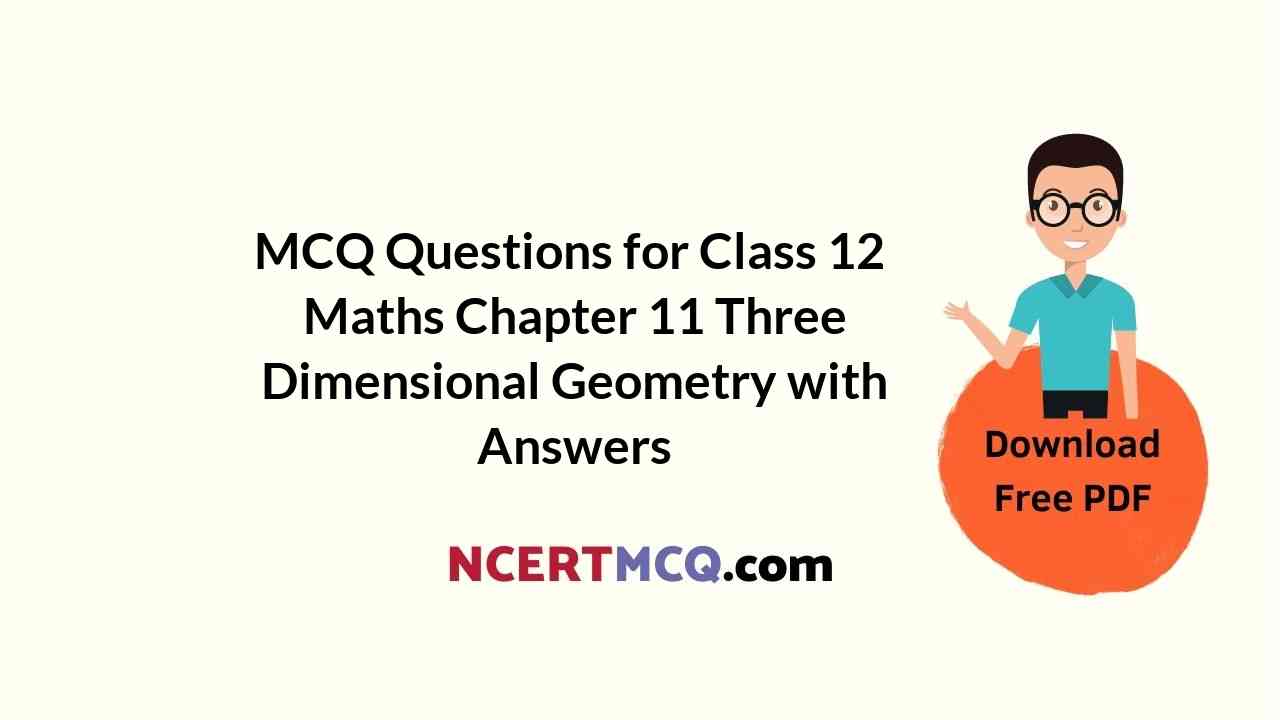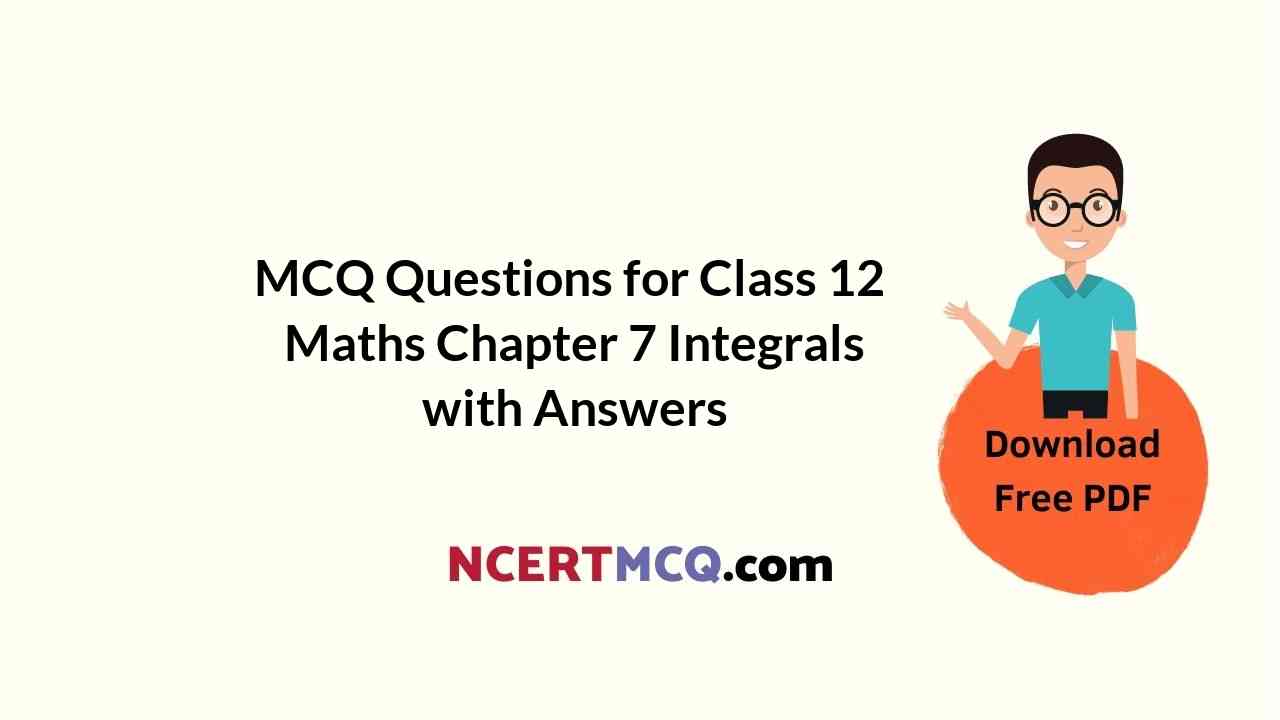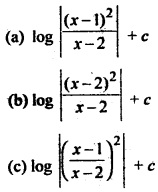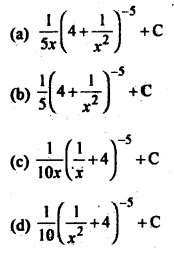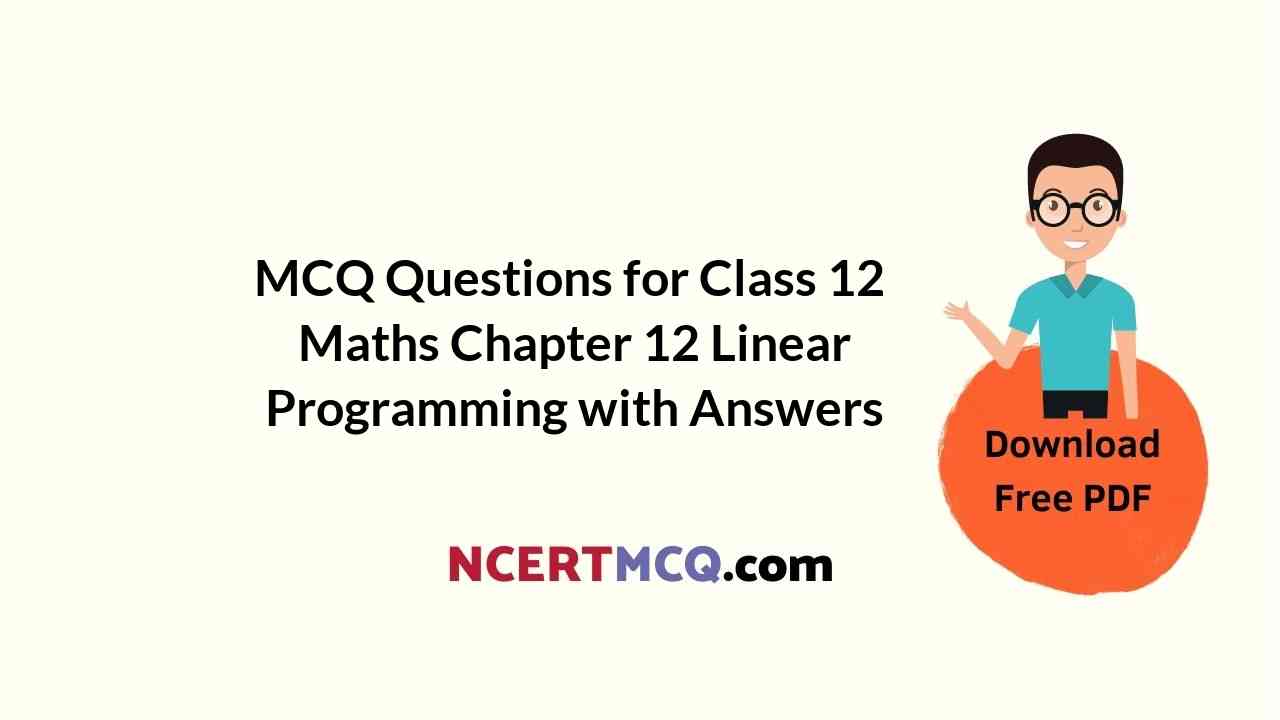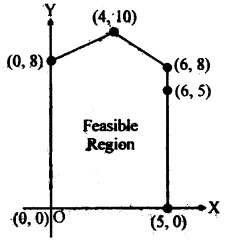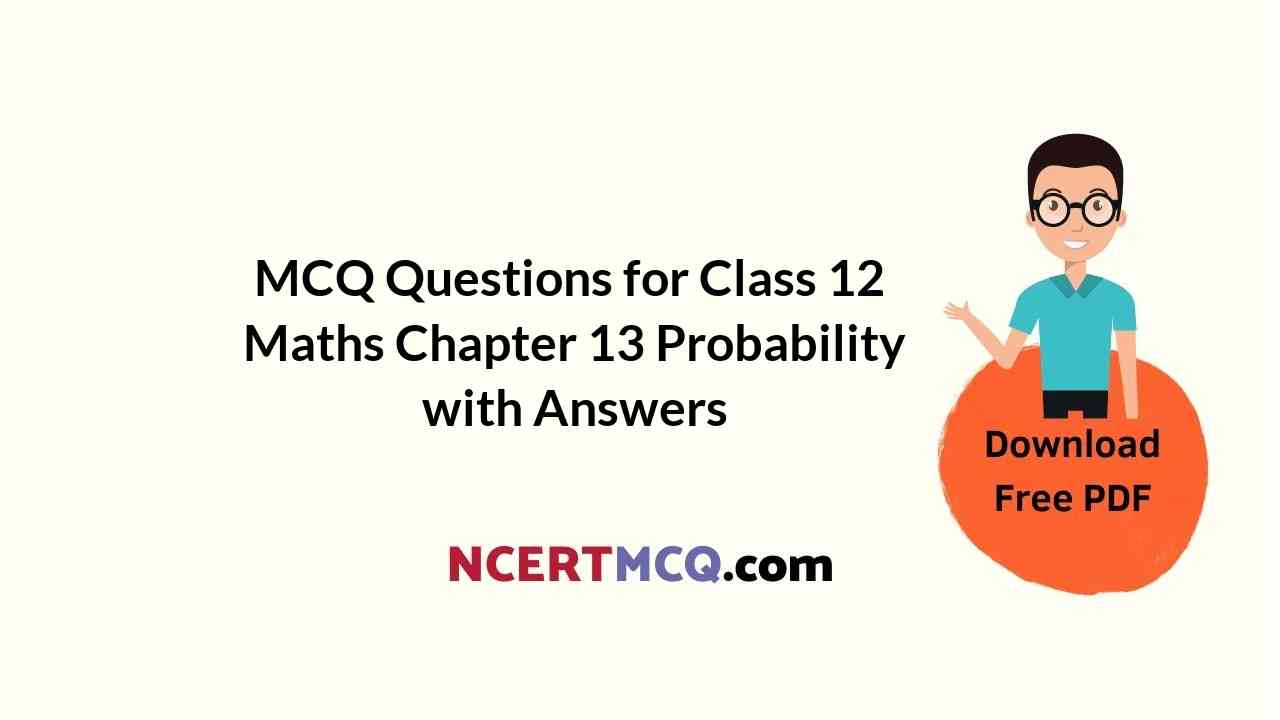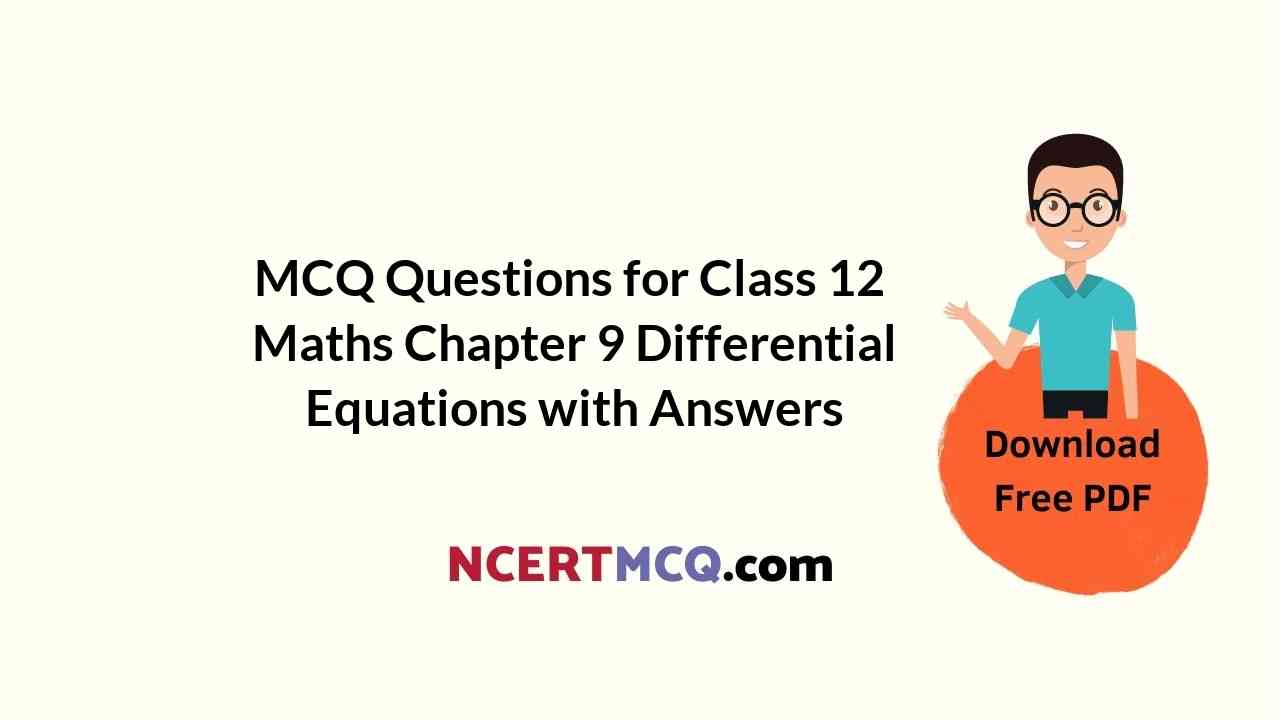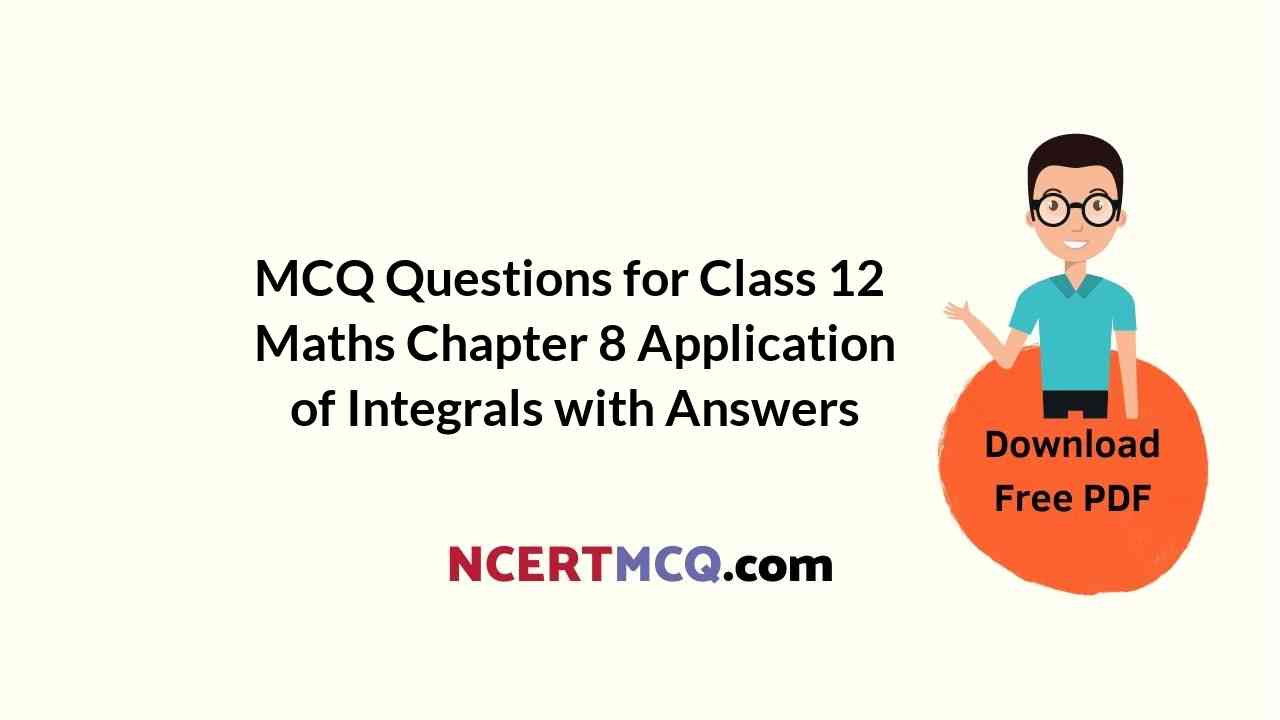Check the below NCERT MCQ Questions for Class 11 Maths Chapter 14 Mathematical Reasoning with Answers Pdf free download. MCQ Questions for Class 11 Maths with Answers were prepared based on the latest exam pattern. We have provided Mathematical Reasoning Class 11 Maths MCQs Questions with Answers to help students understand the concept very well.
Class 11 Maths Chapter 14 MCQ With Answers
Maths Class 11 Chapter 14 MCQs On Mathematical Reasoning
Mathematical Reasoning MCQ Question 1.
The connective in the statement 2 + 7 > 9 or 2 + 7 < 9 is
(a) and
(b) or
(c) >
(d) <
Answer
Answer: (b) or
Hint:
Given, statement is 2 + 7 > 9 or 2 + 7 < 9 Here, connective is or. It connects two statement 2 + 7 > 9, 2 + 7 < 9
MCQ On Mathematical Reasoning Class 11 Question 2.
Which of the following is not a negation of the statement A natural number is greater than zero
(a) A natural number is not greater than zero
(b) It is false that a natural number is greater than zero
(c) It is false that a natural number is not greater than zero
(d) None of these
Answer
Answer: (c) It is false that a natural number is not greater than zero
Hint:
Gievn statement is:
A natural number is greater than zero
Negation of the statement:
A natural number is not greater than zero
It is false that a natural number is greater than zero
So, option 3 is not true.
Mathematical Reasoning Class 11 MCQ Question 3.
Which of the following is a statement
(a) x is a real number
(b) Switch of the fan
(c) 6 is a natural number
(d) Let me go
Answer
Answer: (c) 6 is a natural number
Hint:
The statement 6 is a natural number is true.
So, it is a statement.
Mathematical Reasoning Questions With Answers For Class 11 Question 4.
The contra-positive of the statement If a triangle is not equilateral, it is not isosceles is
(a) If a triangle is not equilateral, it is not isosceles
(b) If a triangle is equilateral, it is not isosceles
(c) If a triangle is not equilateral, it is isosceles
(d) If a triangle is equilateral, it is isosceles
Answer
Answer: (d) If a triangle is equilateral, it is isosceles
Hint:
Given, statement is:
If a triangle is not equilateral, it is not isosceles.
Now, contra-positive is:
If a triangle is equilateral, it is isosceles.
MCQ On Mathematical Reasoning Question 5.
Which of the following is a statement
(a) I will go tomorrow
(b) She will come today
(c) 3 is a prime number
(d) Tomorrow is Friday
Answer
Answer: (c) 3 is a prime number
Hint:
The statement 3 is a prime number is true.
So, it is a statement.
Mathematical Reasoning Questions With Answers Pdf Question 6.
The contra-positive of the statement if p then q is
(a) if ~p then q
(b) if p then ~q
(c) if q then p
(d) if ~q then ~p
Answer
Answer: (d) if ~q then ~p
Hint:
Given statement is if p then q
Now, contra-positive of the statement is:
if ~q then ~p
Mathematical Reasoning MCQs Question 7.
Which of the following is not a statement
(a) The product of (-1) and 8 is 8
(b) All complex number are real number
(c) Today is windy day
(d) All of the above
Answer
Answer: (d) All of the above
Hint:
A sentence is a statement if it is true.
None of the above sentence is true.
So, option 4 is the correct answer.
Mathematical Reasoning Questions Class 11 Question 8.
If (p or q) is true, then
(a) p is true and q is false
(b) p is true and q is true
(c) p is false and q is true
(d) All of the above
Answer
Answer: (d) All of the above
Hint:
(p or q) is false when both p and q are false otherwise it is true.
Mathematical Reasoning Class 11 Questions Question 9.
Which of the following statement is a conjunction
(a) Ram and Shyam are friends
(b) Both Ram and Shyam are friends
(c) Both Ram and Shyam are enemies
(d) None of these
Answer
Answer: (d) None of these
Hint:
All the statements are conjunction. So, option 4 is the correct answer.
MCQ Questions For Class 11th Maths Question 10.
Which of the following is a compound statement
(a) Sun is a star
(b) I am a very strong boy
(c) There is something wrong in the room
(d) 7 is both odd and prime number.
Answer
Answer: (d) 7 is both odd and prime number.
Hint:
A compound statement is connected with And , or , etc.
So, the statement 7 is both odd and prime number is a compound statement.
Reasoning Questions For Class 11 Question 11.
Which of the following is a statement
(a) x is a real number
(b) Switch of the fan
(c) 6 is a natural number
(d) Let me go
Answer
Answer: (c) 6 is a natural number
Hint:
The statement 6 is a natural number is true.
So, it is a statement.
Mathematical Reasoning Questions Question 12.
Which of the following is not a statement
(a) 8 is less than 6.
(b) Every set is finite set.
(c) The sun is a star.
(d) Mathematics is fun.
Answer
Answer: (d) Mathematics is fun.
Hint:
8 is less than 6 if false. So it is a statement.
Every set is finite set is false. So it is a statement.
The sun is a star is true. So it is a statement.
Mathematics is fun. This sentence is not always true. Hence, it is not a statement.
Maths MCQs For Class 11 With Answers Pdf Question 13.
Which of the following is true
(a) A prime number is either even or odd
(b) √3 is irrational number.
(c) 24 is a multiple of 2, 4 and 8
(d) Everyone in India speaks Hindi.
Answer
Answer: (d) Everyone in India speaks Hindi.
Hint:
The statement Everyone in India speaks Hindi is not true.
This is because, there are some states like Tamilnadu, Kerala, etc. where the person does not speak Hindi.
MCQ Questions For Class 11 Maths With Answers Pdf Download Question 14.
If (p and q) is false then
(a) p is true and q is false
(b) p is false and q is false
(c) p is false and q is true
(d) all of the above
Answer
Answer: (d) all of the above
Hint:
(p and q) is true when both p and q are true otherwise it is false.
Mathematical Reasoning Class 11 Question 15.
The converse of the statement p ⇒ q is
(a) p ⇒ q
(b) q ⇒ p
(c) ~p ⇒ q
(d) ~q ⇒ p
Answer
Answer: (b) q ⇒ p
Hint:
The converse of the statement p ⇒ q is
q ⇒ p
Mathematical Reasoning Questions Pdf Question 16.
The negation of the statement The product of 3 and 4 is 9 is
(a) It is false that the product of 3 and 4 is 9
(b) The product of 3 and 4 is 12
(c) The product of 3 and 4 is not 12
(d) It is false that the product of 3 and 4 is not 9
Answer
Answer: (a) It is false that the product of 3 and 4 is 9
Hint:
Given, statement is The product of 3 and 4 is 9
The negation of the statement is:
It is false that the product of 3 and 4 is 9
MCQ Questions For Class 11 Maths With Answers Pdf Question 17.
Sentence involving variable time such as today, tomorrow, or yesterday are
(a) Statements
(b) Not statements
(c) may or may not be statements
(d) None of these
Answer
Answer: (b) Not statements
Hint:
Sentence involving variable time such as today, tomorrow, or yesterday are not statements. This is because it is not known what time is referred here.
Question 18.
The converse of the statement if a number is divisible by 10, then it is divisible by 5 is
(a) if a number is not divisible by 5, then it is not divisible by 10
(b) if a number is divisible by 5, then it is not divisible by 10
(c) if a number is not divisible by 5, then it is divisible by 10
(d) if a number is divisible by 5, then it is divisible by 10
Answer
Answer: (d) if a number is divisible by 5, then it is divisible by 10
Hint:
Given, statement is if a number is divisible by 10, then it is divisible by 5
Now, converse of the statement is:
if a number is divisible by 5, then it is divisible by 10
Question 19.
Which of the following is the conditional p → q
(a) q is sufficient for p
(b) p is necessary for q
(c) p only if q
(d) if q then p
Answer
Answer: (c) 6 is a natural number
Hint:
Given, p → q
Now, conditional of the statement is
p only if q
Question 20.
Which of the following is not a negation of the statement A natural number is greater than zero
(a) A natural number is not greater than zero
(b) It is false that a natural number is greater than zero
(c) It is false that a natural number is not greater than zero
(d) None of these
Answer
Answer: (c) It is false that a natural number is not greater than zero
Hint:
Given statement is:
A natural number is greater than zero
Negation of the statement:
A natural number is not greater than zero
It is false that a natural number is greater than zero
So, option 3 is not true.
We hope the given NCERT MCQ Questions for Class 11 Maths Chapter 14 Mathematical Reasoning with Answers Pdf free download will help you. If you have any queries regarding CBSE Class 11 Maths Mathematical Reasoning MCQs Multiple Choice Questions with Answers, drop a comment below and we will get back to you soon.
Class 11 Maths MCQ:
- Sets Class 11 MCQ
- Relations and Functions Class 11 MCQ
- Trigonometric Functions Class 11 MCQ
- Principle of Mathematical Induction Class 11 MCQ
- Complex Numbers and Quadratic Equations Class 11 MCQ
- Linear Inequalities Class 11 MCQ
- Permutations and Combinations Class 11 MCQ
- Binomial Theorem Class 11 MCQ
- Sequences and Series Class 11 MCQ
- Straight Lines Class 11 MCQ
- Conic Sections Class 11 MCQ
- Introduction to Three Dimensional Geometry Class 11 MCQ
- Limits and Derivatives Class 11 MCQ
- Mathematical Reasoning Class 11 MCQ
- Statistics Class 11 MCQ
- Probability Class 11 MCQ
